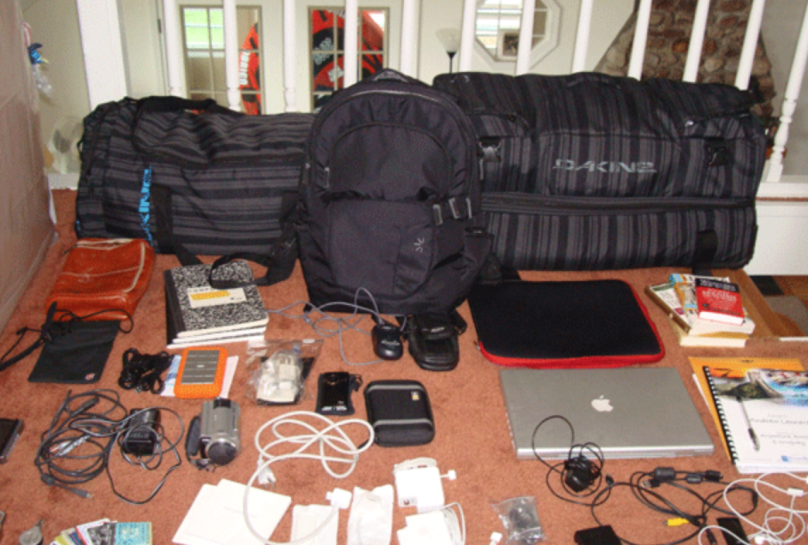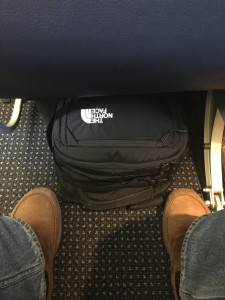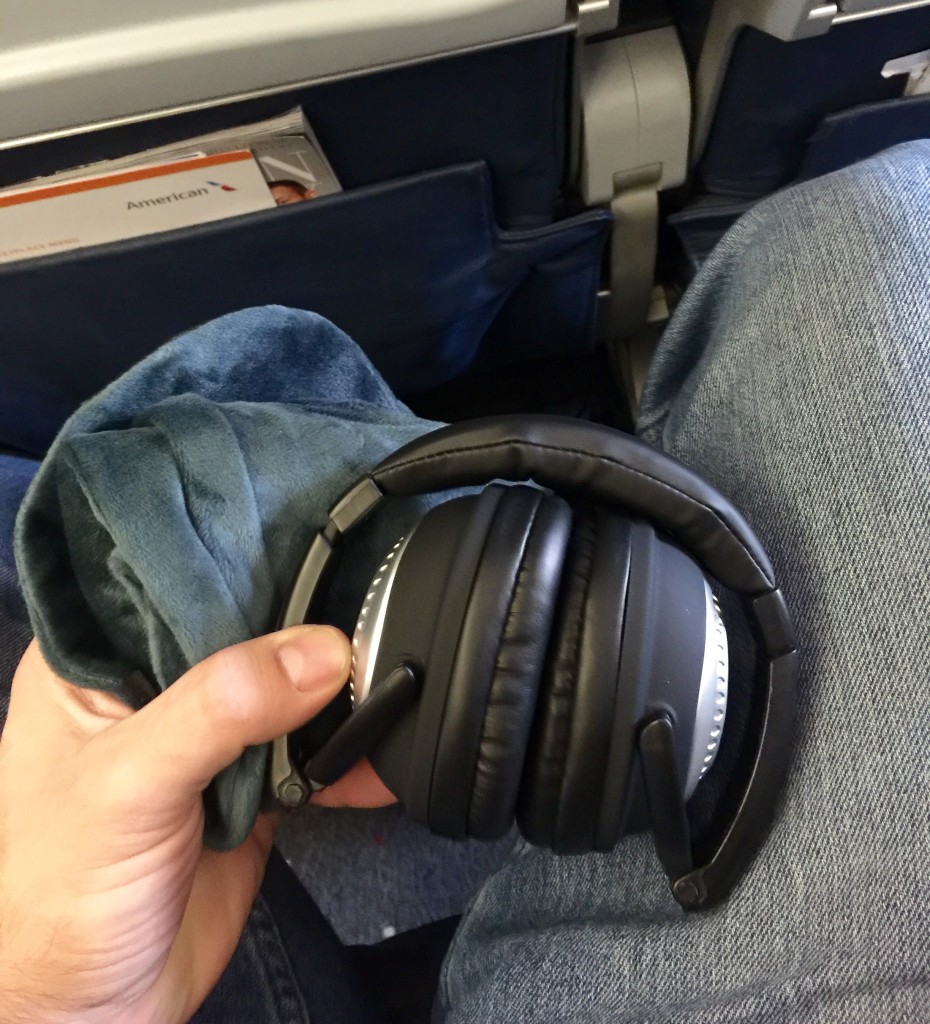Packing Tricks & Travel Tips

Every good protective agent has a passion for gear and being resourceful. It is a trait that is inclusive of many of sub-traits that are highly valuable in this profession. One of the largest interests among practitioners whenever they get a moment to themselves is “What multitool is that?” or “What bag is that?” and so on and so forth. In this article I will shed some light on my typical packing list with some insight from other practitioners as well. As always, the items and recommendations may be suitable to your task, threat and environment and should be modified in order to be effective based on your parameters.
The first thing to discuss is an appropriate pack. When image is not of concern, I prefer my North Face Recon backpack in which I did a separate review available here: TNF Recon Review

The main points of this pack include well thought out placement and size of pockets, (some with fleece lining for electronics), a protected laptop pouch, along with the comfort, quality and warranty which come from a TNF product.
Planning a Trip? Security & Other Tips for Traveling Abroad
In the pack, I always carry a laptop with accessories to include: charging accessories, mouse/pad, and a thumb drive. While we are on electronics I like to include the charging accessories for my mobile along with a dash mount in the easy to access top pouch. This makes for easy access when on the road or on the flight. The charging accessory I prefer is an extremely versatile wall and vehicle type with two usb ports. In this pouch I also keep headphones, a microfiber cloth and chapstick as anyone who spends a lot of time on flights will understand.
Travel Tips From Elijah Shaw
- Roll don’t fold – This technique works well for me in terms of maximizing space and getting the least amount of wrinkles on the garments.
- Keep it simple — If you are required to wear a suit on a multi day trip, don’t think multiple suits (which are going to take up a lot of space, instead pack the minimal amount and instead focus on packing fresh shirts and ties. Also a helpful space saver hint is that you can ask the drycleaner to box your shirts as opposed to getting them back on a wire hanger.
- Think modular — My optimal setup consists of a large suitcase (checked baggage) a duffle bag (checked or carry on optional) and a backpack/sling bag (carry on) that’s three pieces. With that said, unless I’m at capacity, each of my pieces can fit inside the other saving space.
- Build your “GO bag” around your medical kit — I personally like to have a compact but robust kit in my GO bag so it will take up a bit of space, I make that my CenterPoint and then fit in my other essentials around it. In most environments the likelihood of you/your client having a medical emergency is much greater than getting in a shootout (or repelling from a building for those of you that pack grappling hooks.
- The rule of Two — Remember when packing your GO Bag on a Close Protection assignment that you are not just packing for yourself, but for your Protectee as well. Long day in the field and decided to pull out an energy bar for some nourishment? Better have two, one for yourself, and one for your client if they ask. Same with water, hand sanitizer, and even phone charging cords.
- Luggage Tags with identifiers are a life saver. – If I’m moving with my Protectee, often times we are not waiting for the luggage but bypassing baggage claim and heading straight to the vehicle. Luggage will then be picked up by one of the client’s staff, or an assignment member of the Security Detail. Having an easily identifiable numbered tag makes it simple for whoever is picking up the luggage. “Two bags marked 019”. That also makes life easier when instructing a hotel bellman which rooms to deliver the bags to.
–
Elijah Shaw, CEO of ICON is an active Security Consultant who spends over 70% of the year traveling with his clients domestically as well as internationally.
The other necessities are in the second largest compartment of the pack, easy to get to and organized within the built in features of the pack. These items are additional charging accessories including a small power pack and a PowerAll, radio with extra battery, ear piece and charger, an additional IPAK (link below), bandaids, miscellaneous OTC meds (pain, allergy, motion sickness) and cosmetics (toothbrush/paste, deodorant) in a small personal case, 2x smoke masks (breath of life), CPR pack with gloves and barrier device, miscellaneous pens/pencils and note taking gear, batteries, and whatever else I can think of which would be suitable to the task, threat and environment.

Great gear: noise canceling ear phones, headphones (pictured) are great too, but bulky and an inflatable neck pillow is a great comfort item as well.
In the outer compartment, I keep a hat and gloves with hand sanitizer and napkins in a side pouch, with the other left available for a water bottle. The hand sanitizer and napkins may sound silly to those who have not carried them before, but give it a try and see how many times they will save the day.
A tip I learned from traveling to Mexico – If you can’t trust drinking the water, avoid washing your hands with it as well. Rule of thumb: if your hands are ‘soiled’ wash them, if your hands are ‘germy’ use sanitizer.
For the main compartment, I fill it with two changes of clothes and of course some ‘comfies’ for rack time. The method of packing comes with a need for minimizing space, minimizing effect and wrinkles on the clothes and minimizing time.

The way I do it is a ‘combat role’ method, as seen in the pictures above. You simply lay out the outfit, folded long ways, then roll it up. This makes for a compact but effective way of filling a small pack. If you require more than a couple of outfits or more than one outfit and a suit, a full garment bag is recommended.
Tips to minimize your packing list and helpful hints:
- If possible, select shoes that fit all occasions – shows are hard to pack and take up a lot of space.
- Plan your attire with consistency in accessories – this avoids taking multiple/different color belts, shoes, ties, etc.
- Wear a reversible belt to avoid taking two.
- Select your luggage carefully – plan for enough space and potentially more along the trip.
- Pack with a consideration for what you will need and when you will need it – this reduces unpacking everything at each stop.
- Plan for laundry and bring a large ZipLoc, or two – planning laundry will reduce the amount of clothes you need to bring and a large ZipLoc for dirty clothes is an amazing thing. They require negligible space and weight, so bring two.
- Fill space wherever you can – socks in shoes is a great example of how to do this as this maintains shape of the shoe as well.
———————————————————————-
Joseph M. LaSorsa, CPP® currently employed as a senior partner managing and conducting: Protective Operations Training Courses, Executive Protection & Bodyguard Services, Risk Management Consultations & Seminars, Workplace Violence Prevention Seminars & Intervention Services, Security Consultations & Seminars, Private Investigations and Technical Surveillance Counter-Measures with LaSorsa & Associates – an International Protection, Investigations & Consulting Firm.
https://www.linkedin.com/in/josephmlasorsa
